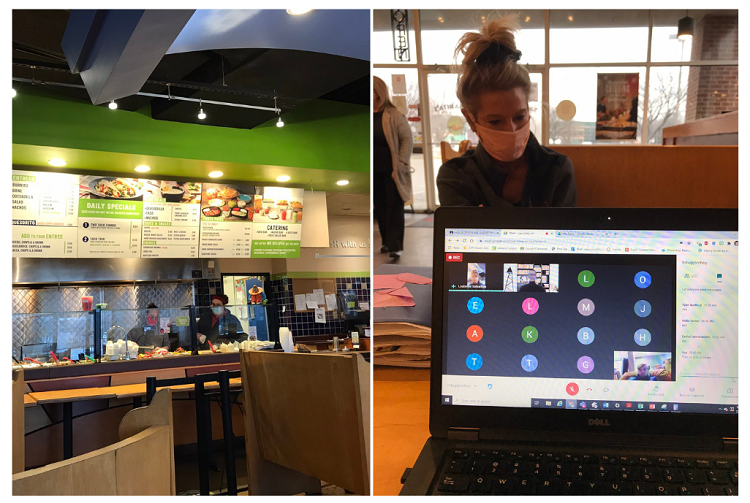
Field trips make for memorable learning experiences. However, with the ongoing pandemic, the days of traditional field trips are on hold. Bring those memorable learning experiences to your students with virtual field trips! High School of Business™ teachers from Eastern High (KY), Maria Machin and Rachel Frydlewicz, shared their tips with us on how to organize a successful virtual field trip. Maria’s students went on a virtual field trip to Salsarita’s, a locally owned restaurant chain in Louisville, KY, while Rachel’s students virtually visited the Kentucky Derby Museum.
Tip 1: Use your existing business contacts.
Maria Machin: “Pam Stallings is the marketing director of Salsarita’s which is a fast-casual, locally owned restaurant chain in Louisville. Earlier in November, Pam reached out to us at our advisory (steering committee) meeting to find more Eastern students ready for work-based learning, so I reached out to her with my idea [of a virtual field trip].”
Rachel Frydlewicz: “The process in carrying out the virtual field trip [to the Kentucky Derby Museum] was just a matter of sending an email to the director. It helped that we went on in-person field trips in years past. So, we had already built rapport.”
Tip 2: Work with your business contact to tie the field trip to classroom lessons.
MM: “I did an employability project [that] incorporated workplace communication, ethical leadership, leadership, and employment law… Ms. Stallings gave us a virtual tour of one of her restaurants where kids got to see lunch and catering prep, hear from the workers there, and Ms. Stallings gave tips on ‘dos and don’ts’ of applying for a job. We did an exercise where we looked at a bad application and talked about what was wrong with it.”
RF: “The presentation was a combination of both our heads together. I wanted to link the supply and demand concepts [from our current lesson] to a real-world scenario. The presenter and his co-host engaged the students in the chat; they also called on random students to not only answer questions, but to also use them in examples. They both took us on a virtual tour first. Then, they went over the impact of the Derby on the city of Louisville, discussing marginal utility—how to determine the price of a ticket based on the demand, and supply and demand, such as seat costs on a normal day vs. Derby day and personal seating licenses. The main presenter also spoke about African Americans because this is a pillar in our district.”
Tip 3: Use the technology that works best for you, your business contact, and your students.
MM: “I didn’t have any logistical issues because I used the Google Meet link that the students always use to log in [for virtual class]. I just shared that link with Ms. Stallings and she joined us—just had to get her there vs. all my students. I shared the presentation from my screen, and she shared from her phone as she walked around the restaurant as an audience member. I am doing each class separately at their regular Google Meet time, so that made it seamless.”
RF: “The most challenging hurdle to jump was the student access to the Google Meet. The Kentucky Derby presenter hosted [using their own link], and our students could not access with their credentials. To pivot, students had to use personal accounts. I’ll also mention that all three classes were invited to one time-slot. I consider it a success because I had 45/75 students attend. Upon reflecting, I would have created an event in my MS Teams calendar. Then, I would have given the presenter access to share on that platform.”